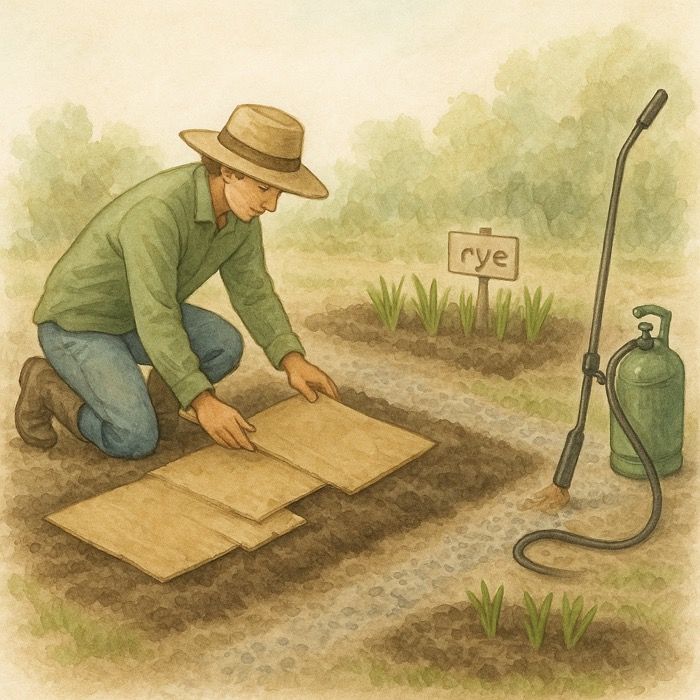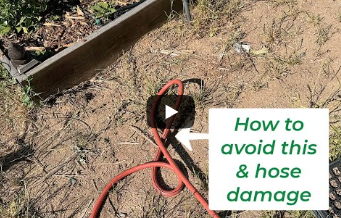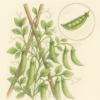October Garden Checklist – Essential Tasks to Keep Your Garden Thriving
October Garden Checklist and Planting Guide
October is the month where your garden shifts from summer abundance to quiet preparation. The air cools, days shorten, and your soil is ready to support new plantings that will reward you in spring and beyond. Whether you’re a home gardener, flower farmer, or simply someone who wants their beds neat before frost, October offers a perfect balance of cleanup and planting opportunities.
This guide covers what to do in the garden in October, what to plant now, and how to make the most of the season no matter where you live.
Why October Is a Key Gardening Month
Autumn is not just about shutting the garden down. October is one of the best months to plant, thanks to warm soil, cooler air, and regular rainfall. This combination helps roots establish quickly without the stress of summer heat. From planting bulbs to seeding leafy greens, October is the month where today’s work translates into tomorrow’s blooms and harvests.
October Garden Tasks – What to Do Now
The October garden checklist is all about tidying, protecting, and planting. By tackling these essential tasks, you’ll not only protect your garden through winter but also set yourself up for a thriving spring.
- Remove spent crops – Pull up tomatoes, cucumbers, beans, and any other plants that have finished producing. Leaving them in place invites pests and disease.
- Mulch beds and perennials – Add a fresh 2–3 inch layer of mulch around shrubs, trees, and perennials. Mulch insulates the soil, conserves moisture, and prevents weeds from sprouting.
- Rake and recycle leaves – Fallen leaves are a free garden resource. Shred them to use as mulch or add them to your compost pile. Whole leaves can smother grass and garden beds, so break them down first.
- Sow cover crops – Plant clover, winter rye, or vetch to protect soil from erosion and build organic matter for spring.
- Water before frost – Plants that enter winter hydrated are less stressed. Give perennials, trees, and shrubs a deep soak before your first freeze.
- Weed thoroughly – Weeding now keeps seeds from germinating in spring and makes beds easier to manage.
- Prepare tools for storage – Wash, sharpen, and oil pruners, hoes, and shovels. Proper care extends their life and makes spring gardening easier.
- Protect tender plants – Bring in pots of succulents, citrus, and tropical plants. In mild zones, use frost cloth or cloches to extend their season outdoors.
What to Plant in October
Planting in October is one of the best-kept gardening secrets. With warm soil and cool air, plants focus on root development rather than leaf growth. This means stronger, healthier plants come spring.
- Spring bulbs – Plant tulips, daffodils, hyacinths, crocuses, and alliums now for breathtaking displays next spring. Stagger bloom times by planting early, mid, and late varieties.
- Garlic and onions – Garlic cloves and onion sets planted in fall establish strong roots and reward you with large bulbs the following summer. Mulch heavily for protection.
- Leafy greens – Sow spinach, lettuce, kale, and Swiss chard for quick fall harvests. In mild climates, you can harvest these right through winter.
- Root crops – Carrots, radishes, beets, and turnips do well in cool weather and even improve in flavor after a frost.
- Perennials, shrubs, and trees – October is the ideal time to plant woody ornamentals and long-lived perennials. They’ll spend winter quietly establishing roots, leading to vigorous growth next year.
- Herbs – Parsley, cilantro, and chives love the cool weather. Pot a few to bring indoors and extend your herb harvest.
Regional Gardening Tips for October
Your exact October garden checklist depends on your USDA zone and climate.
- Cold zones (3–6) – Focus on wrapping up. Plant garlic, onions, and bulbs before the ground freezes. Add protective mulch, drain irrigation lines, and clean tools. Use row covers or cold frames to extend leafy green harvests.
- Mild zones (7–9) – October is prime planting season. Sow cool-season crops, plant bulbs, and set perennials in the ground. Continue harvesting late tomatoes and peppers until frost.
- Warm zones (10+) – Gardening continues almost year-round. Use October to plant cool-season vegetables and herbs. Protect against late heat waves with shade cloth or mulch to prevent stress.
Master Gardener Tips for October
- Plant garlic cloves 2–3 inches deep with the pointed end facing up, then cover with mulch for winter protection.
- Rotate vegetable beds when planting fall crops to reduce pest and disease problems.
- Use shredded leaves as one of the best free mulches you’ll ever find. They break down quickly and enrich soil.
- When planting bulbs, mix in bone meal or bulb fertilizer for strong roots and more vibrant blooms.
- Compost piles thrive in October when you layer nitrogen-rich green waste with carbon-rich fall leaves.
Final Thoughts
October gardening is a balance of putting the garden to rest and planting for the future. It’s a month that rewards preparation—garlic cloves become fat bulbs, bulbs become blooms, and mulched perennials come back stronger than ever. With this October garden checklist and planting guide, you’ll enter winter confident and ready for spring success.
FAQ – October Gardening
What vegetables can I plant in October?
In most regions, plant spinach, lettuce, kale, carrots, beets, radishes, garlic, and onions.
Is October too late to plant bulbs?
No. October is the perfect month to plant spring-blooming bulbs before the ground freezes.
Can I still start a fall garden in October?
Yes. Even in colder zones, quick crops like radishes and spinach can be sown, and cover crops will protect soil over winter.
Do I need to water in fall?
Yes. Water deeply before your first hard frost so perennials, trees, and shrubs go into winter well hydrated.
What should I do with fallen leaves?
Shred and use them as mulch, add to compost, or save them as carbon material for balancing your compost pile through winter.
More From Our Master Gardener
Recent Posts

❄️ Snow as Fertilizer – The Truth About “Poor Man’s Nitrogen”

5 Unexpected Winter Weed Control Strategies (That Don’t Involve Mulch)

Harnessing Winter Sun – Passive Solar Tricks for Your Garden

How to Grow Spinach – The Ultimate Beginner’s Guide for Tender, Nutritious Leaves

How to Grow Peas: The Ultimate Beginner’s Guide for Sweet, Crisp Harvests














